
Bubble Washing
| Gentle bubbling to wash out any impurities | 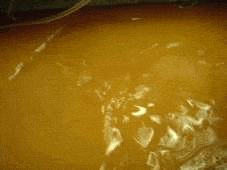 |
| The air stone is made from a 8 inch grinding wheel | 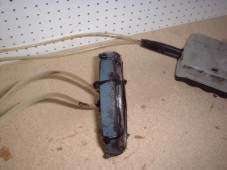 |
| The bottom is sealed with the lid from a coffee tin | 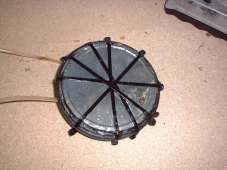 |
| The air hoses are feed into the centre hole. Any gaps are sealed with gasket sealer then the whole thing is held together with cable ties. | 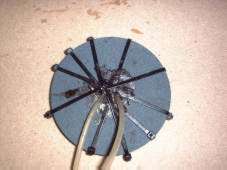 |
| The air pump is a twin outlet fish tank pump designed for a 140 litre fish tank. | 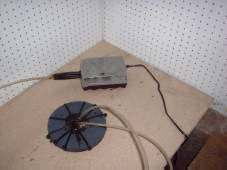 |
Bubble washing - The bubble washing technique was developed at the University of Idaho and is the most economical way of washing biodiesel after processing. The pumps use only a few watts of electricity (your mixing motor may use 250 to 300 watts) and you need only use 50 to 75% ratio of water to biodiesel to wash, as opposed to three or four times the volume of water in the more usual mixing wash method.
You will need various items from an aquarium shop - they are not expensive and you can tailor the size to match the size of your washing tank. You will need a pump - some of them come complete with a filter, which can be used for something else. They all have a mains power cable and air line. Few have switches incorporated, as they are designed for continuous running - a plus point. They are quiet - another plus point - but they do vibrate with a low hum - 50 or 60 cycles per second, depending on your supply. You will also need an air stone. The small ones are the best, as they form many small bubbles, but some of the plastic inlet tubes (especially blue ones, for some reason) tend to be melted by the biodiesel. Some are about six inches long, with clear plastic inlets. You may choose to run with a bigger pump and two stones, using a T piece in the air line - the more bubbles the better. All you do is plug in and leave running for two to three days, checking the pH of the biodiesel periodically. Ideally, it should end up about 7.5 - neutral.
What happens is this - as each bubble is formed at the air stone, it rises through the water layer to the interface. As it passes through into the biodiesel, it carries with it a film of water. This washes the biodiesel as it passes through. When the bubble reaches the surface of the biodiesel it bursts, releasing a droplet of water which falls through the biodiesel, washing again. Clever! The water and biodiesel are not mixed as intimately as when using the mixer method, which is why it is a much slower process. The pump may be attached to the side of the washing tank - the vibrations help the separation. It does tend to amplify the noise, though, from a happy family point of view. Don't ask what can go wrong - it will! If your biodiesel, clear from the mixing tank, suddenly goes cloudy when it is mixed with the washing water, then you have probably added too much alkali (lye, caustic soda, sodium hydroxide, potassium hydroxide or whatever) to the reaction. In contact with the water, this forms soap. Nothing to worry about, even if it does go like chicken soup! Add a gloop of acid to the washing water - not too much. Lemon juice (citric acid), vinegar (acetic acid), battery (sulphuric) acid, phosphoric acid - any acid will do, but much will depend on how you dispose of your washing water! After half a day or so, check again. If the soap hasn't fallen out, add another gloop. It will. Continue washing until the biodiesel is perfectly clear and neutral. On this note, if you use potassium hydroxide as an alkali catalyst and phosphoric acid as your neutraliser, the washing water - much diluted - is good as a liquid fertiliser for the garden as it will contain high levels of phosphates (which are good for root formation) and potassium salts.
Why is washing necessary? Because it takes out unwanted and undesirable constituents such as excess methanol, alkali soaps, waxes and acids. It saves possible damage to your (or somebody else's!) engine. On the odd occasion, after processing a batch containing a lot of animal fats, tallow esters will be formed. At low temperatures these will cloud the batch by crystallising. Try warming a sample to 40 deg C - the biodiesel should clear. It may stay clear, even when the liquid cools, having mixed in. If it does, OK - if not - leave the mixture to settle for a few days and draw off the clear ester from the top. Mix the cloudy layer in with your next batch, but don't allow for it in the calculations of alkali or methanol.